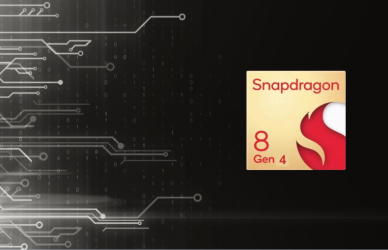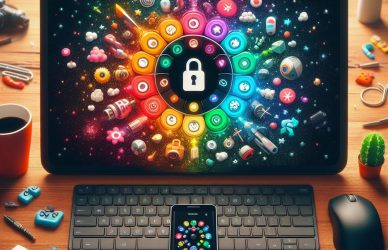Top Uses of Computer in Education? In Classroom
Top Uses of Computer in Education? In Classroom. The question What is the uses of computer in education? is often raised by people who do not believe in the role of computers in education. While Papert is right in criticizing the traditional schooling system, he fails to take into account that programming a computer is an abstraction and requires a mathematical language and algorithm. Any use of a computer forces abstractions. Similarly, computer pictures do not represent the real world.
Tool mode
The tool mode of the computer in education is the most common and prevalent use of computers. This mode encompasses all software that serves as a student learning aid without being tied to a specific content area or grade level. The primary purpose of tool software is to facilitate the management of information and data for students. Although tool software can be a valuable educational resource in the classroom, its effectiveness depends on how well teachers implement its use in the curriculum. Examples of tool software include word processors, desktop publishing packages, spreadsheets, databases, graphics programs, and databases.
In addition to the tutor and student modes, the computer can serve as a tool for education in various contexts. Its use in education has triggered many debates. A prominent critic of this mode is a former teacher at an educational institution. However, the critics are usually deeply involved in the computer or education field. In his article “Should the Computer Teach the Student or the Other Way Around?,” Luehrmann argues that computer use should be guided by the learner and not the other way around. The tool mode of the computer in education has been discussed by several authors. Taylor, R. (2003). The Computer in Education: An Introduction to Technology-Enabled Learning
Tutor mode
The Tutor mode of the computer in education involves the use of a computer as an educational tool. While it has roots in programmed instruction, it is much more flexible than this. Tutor mode can integrate dynamic graphics and other teaching aids, and can store a student’s performance history. It is also flexible enough to move at a variety of speeds and be interruptible. Its uses in education range from enriching classroom learning to enhancing student performance in an exam.
This mode can be applied in any context.
For example, a student can be taught to type using a computer program, rather than a real person. The Tutor mode of the computer in education is more appropriate for older students since it enables teachers to broaden their teaching approaches. While it can be a useful tool for teaching, the role of the computer in education is increasingly changing with the rise of the internet and smartphones. Vygotsky, a linguist, argued that human interaction is the most important component of language learning.
The Tutor mode of the computer in education is especially useful when the teacher wants to evaluate the student’s progress. For instance, a teacher could assign a project requiring the students to create a calendar with Excel. In this way, the learners could acquire information about computers and apply it to their own work. In addition to this, the teacher can evaluate the learners’ performance by evaluating their achievement, which in turn can be imparted to others.
Among other advantages of using the Tutor mode of a computer in education is that it can be used in any context. Teachers will become problem-solvers and will be able to design curricula according to their student’s interests and needs. With the aid of a computer, teachers will be able to learn new things, including the computer’s programming language. With the help of the Tutor mode, teachers can also become problem-solvers and learn from their students.
Tutee mode
The role of computers in education has often been discussed in terms of the “tutee” and the “tool.” The first mode is based on Piaget’s theory that knowledge should be constructed by learners through experience. The second mode is based on a different concept: the “tool” mode, in which the computer serves as a tutor to a student. Both modes contribute to learning, but they are not as beneficial.
To assess the effects of the Tutee mode on learning outcomes, a qualitative evaluation was conducted. Participants were asked open-ended questions about their experiences of the tutorial process, including its advantages and disadvantages. They were asked whether they felt that they received better feedback from their tutors because of the experience. Overall, the results indicated that the tutee mode of learning is beneficial for the student, and they should be considered as such.
The RPT analysis identified three categories of student utterances: question, thought aloud, and collaboration. The latter two categories are characterized by the presence of direct instruction from the tutor. The tutors typically initiate most of the instructional utterances, while the tutees are less active in the interaction. The first two categories represent the role of the tutee in peer tutoring. However, the third category, the question, contains the most RPT utterances.
The Tutee mode in education was implemented in a plethora of settings. This method was designed to be long-term, sustainable, and applicable to a wide range of academic disciplines, levels, and cultures. It was based on theory and demonstrated to have a range of benefits for both the tutee and the tutor. This model is largely cost-effective and requires minimal resources. But it does have drawbacks.
Internet mode
One of the most significant benefits of the Internet mode of computer in education is its capacity to expand educational resources. Teachers can make the best use of this resource to create their own curricula that are tailored to students’ interests and needs. Computers can be a useful addition to any classroom, improving research work and communication with education providers. They also offer huge storage space, which can be used to store educational materials. And, as students increasingly expect, they can access this resource from anywhere, anytime.
The Internet has the potential to greatly improve education, but these claims should be viewed as contentious and debated issues. This chapter asks the fundamental question: what kind of education do we want? And what kind of future education do we want? As a key theme of the chapter, we explore the complexities of the Internet’s role in education. We will address the potential benefits and risks of the Internet’s role in education and the question of what sort of education is desirable.
Top Uses of Computer in Education? In Classroom
The Internet has many benefits for learning, but there are significant drawbacks. It can be expensive, and some people don’t want to use it as their primary computer. Top Uses of Computer in Education? In Classroom But many people use it as an educational tool. Th.is is because it offers access to education at any time, anywhere. And most importantly, it allows for an unlimited amount of access. A child can use this to learn and interact with their peers without interruption. This method is especially useful in situations where physical access to a computer isn’t feasible.
In addition to making learning more convenient, the Internet mode of computers in education offers students access to information they might otherwise not have access to. Computers allow teachers to share research materials and resources among students. And they can make use of the Internet to connect with people who have similar interests. This also means that computers can present information more clearly and effectively than traditional methods. So, when it comes to the Internet mode of computers in education, the possibilities are endless.
Student mode
When evaluating the role of the student mode of computers in education, we must understand the differences between these two modes. A student is a person who learns something while a computer is a tool that facilitates the process. In contrast, a student is a person who learns something from a teacher. The teacher is the person who guides the learning process through experience. A student learns more from a teacher who knows more about computers than they do.
A computer is a powerful tool for students in many different ways.
For example, it helps them find solutions to problems. The computer also helps students find other students who are experiencing the same problems. In addition, a computer can easily search for information on the Internet, which allows students to find a wider range of information. Additionally, a computer can also better present data compared to other methods. And that’s not all that the student mode of computer in education has to offer.
Top Uses of Computer in Education?
The use of individual computers in the classroom falls under a style of teaching called blended learning. Blended learning integrates various methods of delivering content. Teachers use computers with students with special needs to overcome communication barriers and engage in various activities. Computers can also enhance lessons and expand students’ knowledge. Another growing mode of education is mobile computing. As mobile computing becomes more popular, schools are incorporating technology outside of the computer lab.
While examining the student modes of computer use, researchers note that students are most likely to use the computer for educational purposes. Top Uses of Computer in Education? In Classroom. While using computers for personal communication is popular, a study conducted at the University of Minnesota, Crookston shows that the majority of students use their computers for educational purposes. Further, students report that they use the computer for homework, e-mails, and web browsing. The use of computers in education is strongly related to the academic major.
FAQ:
- Top Uses of Computer in Education? In Classroom



